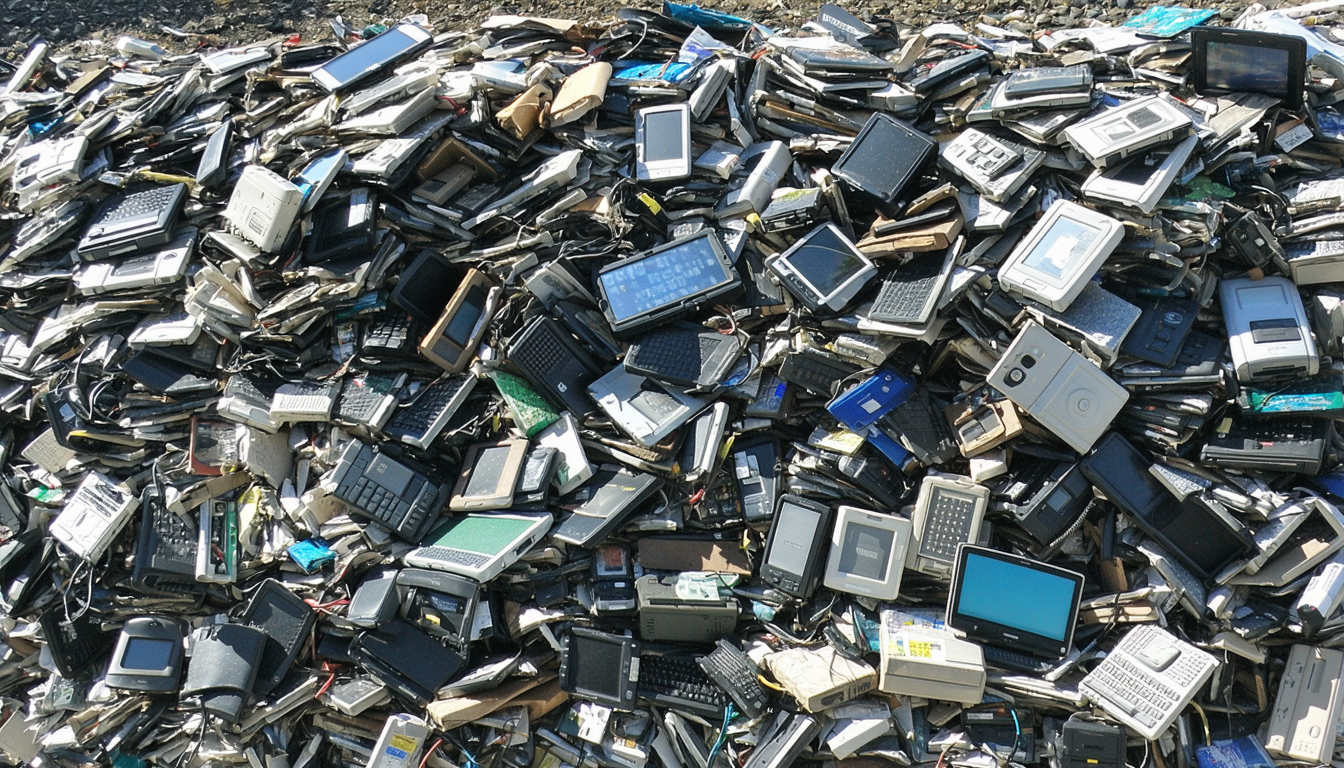In the heart of California, Vacaville is grappling with a mounting e-waste problem that threatens both environmental health and community well-being. As electronic devices become obsolete at an alarming rate, improper disposal of items like old smartphones, laptops, and batteries is creating a significant challenge. This article delves into the current state of Vacaville e-waste management, explores recent developments, and highlights the urgent need for sustainable solutions. With local initiatives underway and state regulations tightening, the city stands at a critical juncture in addressing this growing crisis.
The Growing E-Waste Problem in Vacaville
Vacaville, a city of over 100,000 residents, generates thousands of tons of electronic waste annually. According to the California Department of Resources Recycling and Recovery (CalRecycle), the state saw a 20% increase in e-waste from 2018 to 2022, with smaller cities like Vacaville contributing significantly due to limited recycling infrastructure. Discarded electronics often end up in landfills, releasing toxic substances like lead and mercury into the soil and water.
Local officials have noted a surge in illegal dumping, particularly in rural areas surrounding the city. This not only harms the environment but also poses health risks to residents. The urgency to address Vacaville e-waste has never been clearer as the volume continues to grow with each passing year.
Recent Initiatives to Tackle Vacaville E-Waste
In response to the escalating issue, Vacaville has launched several programs aimed at curbing improper disposal. In early 2023, the city partnered with Recology, a waste management company, to host monthly e-waste collection events. These events have already diverted over 15 tons of electronics from landfills, as per city reports.
Additionally, California’s Electronic Waste Recycling Act, updated in January 2023, mandates stricter guidelines for manufacturers to fund recycling programs. “These regulations are a step forward, but local enforcement remains a challenge,” said Dr. Emily Carter, an environmental scientist at UC Davis. She emphasized the need for community education to ensure residents understand proper disposal methods.
Key efforts in Vacaville include:
– Free drop-off points for small electronics at designated locations.
– Public awareness campaigns about the dangers of e-waste.
– Partnerships with schools to promote recycling among younger generations.
Impact on Stakeholders and Community
The e-waste crisis affects various groups in Vacaville, from residents to local businesses. For households, the lack of accessible recycling options often leads to stockpiling old devices or resorting to illegal dumping. Small businesses, especially those dealing with tech equipment, face high disposal costs due to limited facilities.
Environmental groups are also sounding the alarm. Toxic leaks from improperly discarded electronics threaten local wildlife and water sources like Lake Berryessa, a vital resource for the region. Meanwhile, waste management companies are under pressure to expand services despite budget constraints, highlighting a need for state-level support.
Future Implications and Potential Solutions
The trajectory of Vacaville e-waste management could set a precedent for other small cities across the United States. If current trends continue without intervention, experts predict a 30% increase in e-waste volume by 2030. This could strain local resources further and exacerbate environmental damage.
One potential solution lies in expanding public-private partnerships. “Collaboration between government, businesses, and nonprofits is essential to build sustainable systems,” noted Mark Thompson, CEO of GreenTech Solutions, a California-based recycling firm. Innovations like mobile recycling units or incentives for returning old devices could also make a difference.
On the policy front, advocates are pushing for federal funding to support local e-waste programs. While opinions differ on whether manufacturers or consumers should bear more responsibility, most agree that immediate action is necessary to prevent long-term harm.
Conclusion
Vacaville stands at a crossroads in its battle against electronic waste. With rising volumes, recent initiatives, and evolving regulations, there is hope for progress, but challenges remain. The city’s efforts to educate residents, improve access to recycling, and enforce stricter guidelines are commendable steps forward. However, sustained collaboration and innovation will be crucial to manage Vacaville e-waste effectively. As this issue impacts not just one city but the broader region, addressing it now could pave the way for nationwide change.
Frequently Asked Questions (FAQ)
What is considered e-waste in Vacaville?
E-waste includes discarded electronic devices such as computers, televisions, mobile phones, printers, and batteries that are no longer functional or wanted.
Where can I recycle e-waste in Vacaville?
Residents can utilize monthly collection events organized by Recology or visit designated drop-off points listed on the City of Vacaville’s official website for safe disposal.
Why is e-waste dangerous?
E-waste contains hazardous materials like lead, mercury, and cadmium, which can contaminate soil and water if not disposed of properly, posing risks to human health and the environment.
Are there penalties for illegal dumping of e-waste in Vacaville?
Yes, illegal dumping can result in fines up to $1,000 under California law, along with potential cleanup costs imposed by local authorities.
How can I help reduce e-waste in my community?
You can minimize e-waste by repairing devices when possible, donating usable electronics, and participating in local recycling programs to ensure proper disposal.

